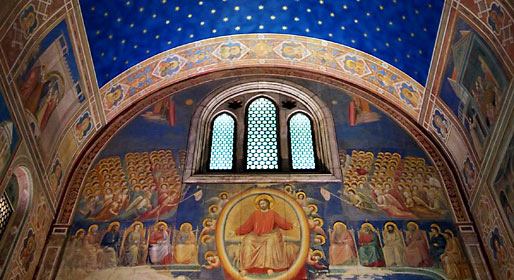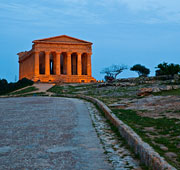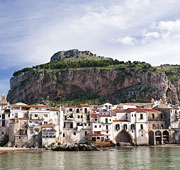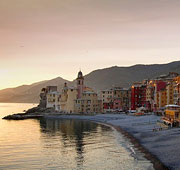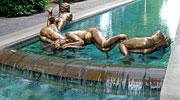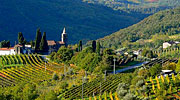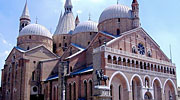The art of history in Veneto
A journey from Verona to Padua, taking time to visit the Palladian masterpieces of Vicenza.
Discovering the art and history of Veneto: from Verona to Padua, from Vicenza to Monselice.
In the city of Romeo and Juliet
Your starting point for this tour of Veneto, once heart of the Venice's Empire, is the ancient city of Verona, at the foot of the Lessini Hills. The fame of this city is legendary - forever associated with the story of the star-crossed lovers, Romeo and Juliet. Here too are many architectural marvels, from a Roman Arena and Theatre to a Renaissance market place. The Roman Amphitheatre, which can hold 20,000 people, is still used today for Verona's famous opera.
Each year Verona's Arena hosts a spectacular program of events, from opera to rock.
VeronaCard 24H
Skip the line to the Arena and enjoy unlimited public transport.
Get your tickets now!
Castelvecchio, the most impressive medieval structure in the city and former stronghold of the Scaligeri is now a museum (you can see the elaborate gothic tombs of the Scaligeri Family in the Arche Scaligere).
The Piazza delle Erbe, has been described as the most enchanting in Italy. The supposed site of Romeo and Juliet's marriage, the Church of San Zeno is the best known religious building in Verona. Other churches to see include those of San Fermo Maggiore and Santa Anastasia.
Palladio's Vicenza
Travel eastwards to visit Vicenza, and the city's rich architectural heritage. Palladio, whose work so greatly influenced Western Architecture, spent much of his life in Vicenza and most of his masterpieces are here, including La Basilica, La Loggia del Capitano, Palazzo Chiericati and his last work, the Teatro Olympico, with its amazing stage set.
Palladian links have led to the establishment of an Architectural Museum in the city. One of the best known Palladian Villas, La Rotonda is just outside Vicenza.
Pleasant surprises: Montagnana, Este and Moselice
Moving towards Padua, make a diversion to see the fortified little town of Montagnana with its Gothic Cathedral and Palazzo Magnerrini Fioratti. Beyond the impressive walls, with their many towers is the Palladian, Villa Pisani.
Montagnana was used as a location for Zeffirelli's oscar-winning film "Romeo and Juliet"
Built on the site of a major Roman city, wrecked by Barbarian invasions, the walled town of Este lies at the foot of the Euganean Hills. When Azzo II d' Este built a castle here in the 10th century the town revived. There are many interesting buildings - the Church of San Martino and the Basilica of Santa Maria delle Grazie for example, and in the cathedral you will find Tiepolo's depiction of St. Thecla liberating the town of plague.
A few kilometers further on, stop to explore Monselice. This site was settled as long ago as the Bronze Age. Named by the Romans Mons Silices - the Mountain of Flintstone, the local stone is evident in the buildings, particularly in the keep, still standing on the Rocca hilltop.
Monselice has had a chequered history but became a major stronghold when Ezzelino III improved the fortifications. His castle houses one of the most important collections of European Medieval weapons and armour. Along the road that leads to the Seven Churches Sanctuary you can see the Old Cathedral and glimpse the private Villas Nani and Duodo. It was the Duodo family who built the Seven Churches which became a very important Sanctuary, (so important that in 1606 pilgrims visiting there were granted the same indulgences as those visiting the Seven Churches of Rome).
Sacred and profane art in Padua
Your journey ends in the agricultural hub of the Veneto, in the renowned university city of Padua. Among the multitude of artworks to be seen here are frescos by Giotto in the Cappella degli Scrovegni and by Mantegna in the Chiesa degli Eremitani. In the Scuola del Santo there are frescos by Titian.
The Basilica of Sant'Antonio, which has been a site of pilgrimage since the 13th century, is a monumental composite of styles containing work by Sansovino, Lombardi, Donatello and Mantegna
The Palazzo delle Ragione and the Cathedral, rebuilt to Michaelangelo's design are just some of the buildings which make up the great architectural heritage of this city.

